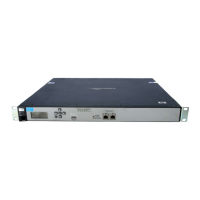Wireless configuration
Radio configuration
4-28
Antenna selection
Supported on: MSM310, MSM320, MSM335, MSM422
Not available in Monitor or Sensor modes.
Select the antenna(s) to use for each radio. Antenna support varies on each AP. For a list of
supported external antennas, see Connecting external antennas in the MSM3xx / MSM4xx
Access Points Management and Configuration Guide.
In most APs, antenna diversity is supported. Diversity provides improved signal quality by
using multiple antennas on the same radio.
Note When using an external antenna, it is your responsibility to make sure that the radio does
not exceed the transmit power level for the country of use. See Transmit power control
on page 4-32.
When creating a point-to-point local mesh link, it is recommended that you use an
external directional antenna.
MSM310, MSM310-R, and MSM320
Select Diversity, Main, or Auxiliary according to the following guidelines:
For a single antenna, connect one antenna to either Main or Aux and select the
corresponding value.
For maximum wireless coverage, install an omnidirectional antenna on the Main and Aux
antenna connectors and select Diversity.
When creating a point-to-point wireless bridge, it is recommended that a single
directional antenna be used on either Main or Aux.
MSM320-R
Only two antenna connectors are available on the MSM320-R. To use both radios, connect an
antenna to each connector. Diversity is not supported.
MSM335
Select either Internal or External according to the following guidelines:
The MSM335 features six internal antennas in its two flaps, providing two antennas for
each of its three radios. Radios 1, 2, and 3, have corresponding external antenna
connectors A, B, and C for optional external antennas.
Diversity is supported on all three radios via the internal antennas. but not when using
external antennas.
MSM422
Select either Internal or External according to the following guidelines:
The MSM422 features three internal antennas in the lower flap for Radio 1 (802.11n/a/b/g)
(corresponding to external connectors A, B, and C) and two internal antennas in the
upper flap for Radio 2 (801.11a/b/g) (corresponding to external connector D). If desired,
install optional antennas via the external connectors.
Radio 1 supports diversity on its internal and external antennas (connectors A, B, and C).
In 802.11n modes, a special form of diversity called MIMO is used.

